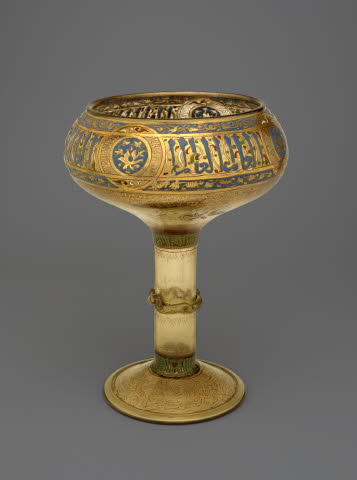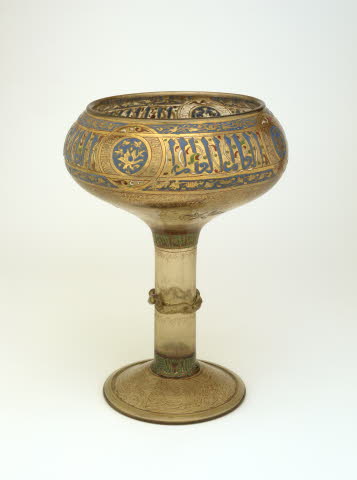Goblet
BackDescription:
Footed bowl in yellowish colourless glass, free blown, applied, enamelled in red, blue, green and white, gilded and tooled on the pontile; decorated with an inscription repeating the Arabic word al-alim ('the learned') and with large lotus flowers contained within roundles.
Object type: | goblet |
Museum number: | 1924,0125.1 |
Culture/period: | Mamluk dynasty |
Date: | 13thC(mid) (circa) |
Production place: | Made in: Syria |
Materials: | glass, gold, enamel |
Technique: | gilded, enamelled, blown, tooled |
Dimensions: | Height: 29.80 cm Width: 20.00 cm Depth: 21.50 cm |
Location: | 15 |
Exhibition history: | Exhibited: 2014 Sep-2015 Jan, BM WCEC, 'Ming: 50 years that changed China' |
Acquisition names: | Donated through: Art Fund (as NACF)~Donated by: Spier, Constance |
Acquisition date: | 1924 |
Curator's comments:
This footed bowl is one of a number of Mamluk glass vessels that have been found in China, probably exported there soon after production. It was acquired in London by Julius Spier, who ran a trading company dealing with China. The inscription repeats the Arabic word al-alim (‘the learned’). Large lotus flowers contained within roundels show the connection to East Asia pre-dated the bowl’s journey to China. Scientific analysis (report dated June 1995) confirms that bone ash was used as an opacifying and colouring agent and that the source of the blue was lapis lazuli.

